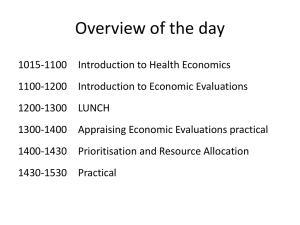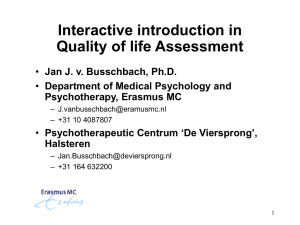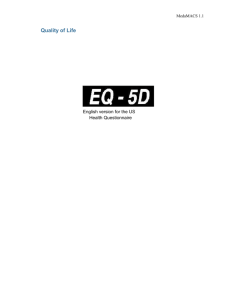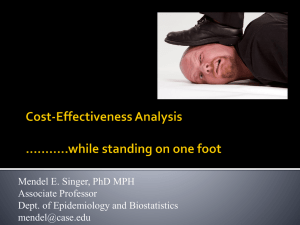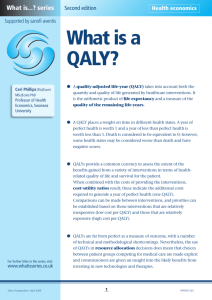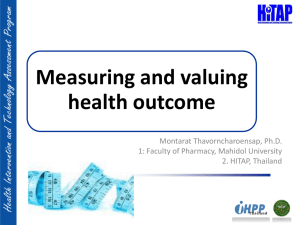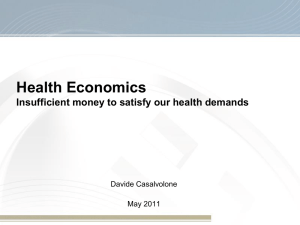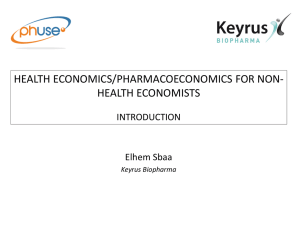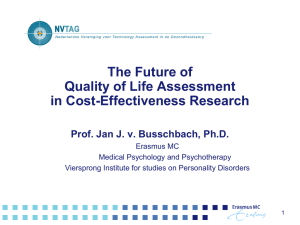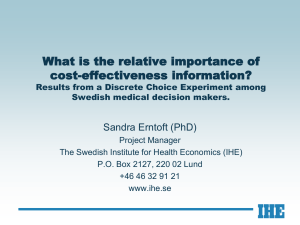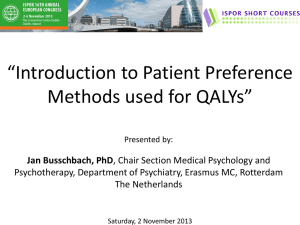What is the QALY? The QALY is defined by the National Institute for
advertisement
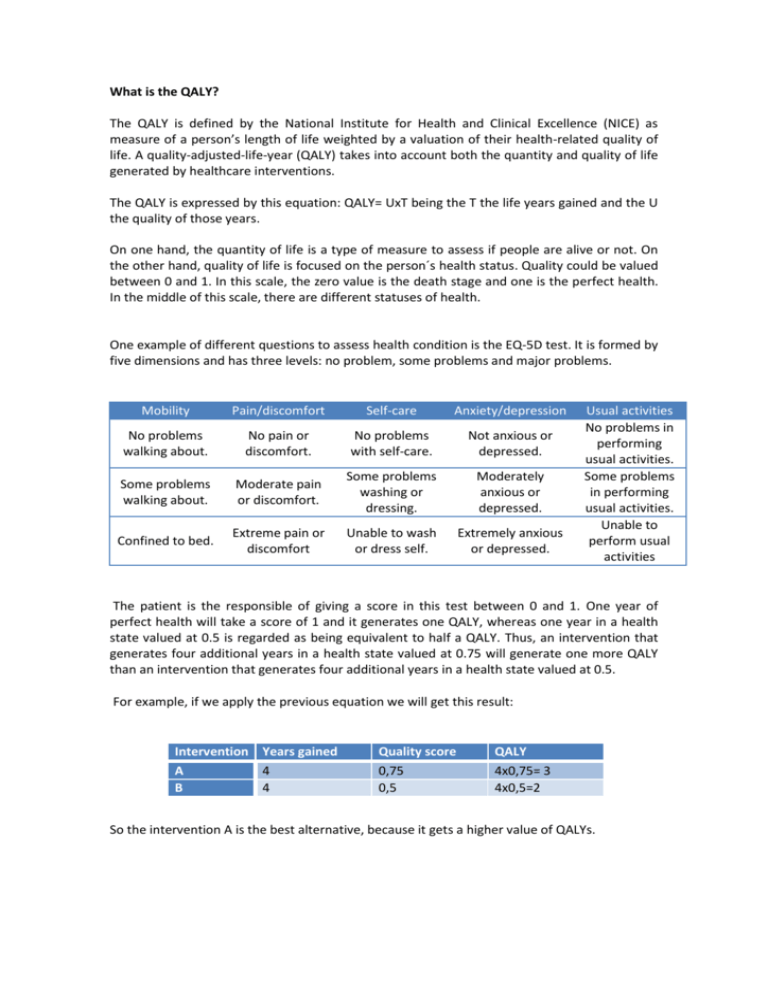
What is the QALY? The QALY is defined by the National Institute for Health and Clinical Excellence (NICE) as measure of a person’s length of life weighted by a valuation of their health-related quality of life. A quality-adjusted-life-year (QALY) takes into account both the quantity and quality of life generated by healthcare interventions. The QALY is expressed by this equation: QALY= UxT being the T the life years gained and the U the quality of those years. On one hand, the quantity of life is a type of measure to assess if people are alive or not. On the other hand, quality of life is focused on the person´s health status. Quality could be valued between 0 and 1. In this scale, the zero value is the death stage and one is the perfect health. In the middle of this scale, there are different statuses of health. One example of different questions to assess health condition is the EQ-5D test. It is formed by five dimensions and has three levels: no problem, some problems and major problems. Mobility Pain/discomfort Self-care Anxiety/depression No problems walking about. No pain or discomfort. No problems with self-care. Not anxious or depressed. Some problems walking about. Moderate pain or discomfort. Some problems washing or dressing. Moderately anxious or depressed. Confined to bed. Extreme pain or discomfort Unable to wash or dress self. Extremely anxious or depressed. Usual activities No problems in performing usual activities. Some problems in performing usual activities. Unable to perform usual activities The patient is the responsible of giving a score in this test between 0 and 1. One year of perfect health will take a score of 1 and it generates one QALY, whereas one year in a health state valued at 0.5 is regarded as being equivalent to half a QALY. Thus, an intervention that generates four additional years in a health state valued at 0.75 will generate one more QALY than an intervention that generates four additional years in a health state valued at 0.5. For example, if we apply the previous equation we will get this result: Intervention Years gained A 4 B 4 Quality score 0,75 0,5 QALY 4x0,75= 3 4x0,5=2 So the intervention A is the best alternative, because it gets a higher value of QALYs. QALYs provide a common currency to assess the extent of the benefits gained from a variety of interventions in terms of health- related quality of life and survival for the patient. They are used to assess the effectiveness of interventions and are combined with the costs incurred in providing the interventions to generate cost-utility ratios in a cost-utility analysis. A cost-utility analysis is performed in the same way as a cost-effectiveness analysis except that the unit of effectiveness is quality-adjusted-life-years (QALYS). A cost-utility ratio is the difference between the costs of two interventions divided by the difference in the QALYs they produce. However the QALY have some disadvantages as a measure method of quality of life: 1. It is hard to understand the results by uneducated people and is needed the intervention of an expert. 2. The development of the test is not clear and in some cases is needed a previous explanation before doing the test. 3. Sometimes the outcomes are not reliable. 4. The test is designed only for chronic diseases, what happens in acute diseases? 5. The test is not equal for all population QALYs and cost–utility analysis provide additional information for decision-makers as they grapple with addressing the healthcare dilemma of where to allocate resources to generate the maximum health benefits for their communities and society as a whole.

